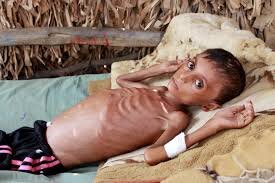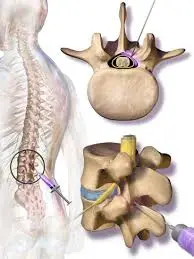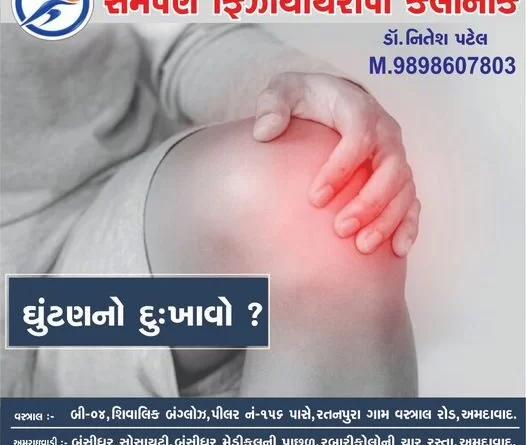Malnutrition: What do you need to know?
Malnutrition is when a people’s diet does not give enough nutrients or the right balance for optimal health. Symptoms are different but frequently include weight loss, decreased appetite, tiredness, and irritability.
Table of Contents
What is malnutrition?
Malnutrition is an imbalance in dietary intake. It happens when a person has too much or too little food or important nutrients. People with malnutrition can lack vitamins, minerals, and other important substances that their bodies require to function.
- Individuals can become malnourished if they do not eat proper food overall.
- However, individuals who eat plenty but do not have proper variation in their diet may also become malnourished.
Malnutrition may lead to:
- Short- and long-term health problems
- Slow recovery from wounds and illnesses
- A higher risk of infection
Some deficiencies may affect specific health problems. For example:
Lack of vitamin A
- Around the world, many babies develop vision problems because of a lack of vitamin A.
Lack of vitamin C
- A lack of vitamin C may outcome in scurvy.
- Scurvy is infrequent in the United States (U.S.), but it may develop if a person does not have a varied diet with plenty of fruits and vegetables
- Unpreserved, frozen, and canned fruits and vegetables all contain vitamin C.
Individuals who are particularly at risk of scurvy involve:
- Older adults
- Young children
- Those who consume a lot of alcohol
- Some individuals with certain mental health conditions
- An overall deficiency
- Malnutrition may lead to marasmus, which is the most severe type of malnutrition. Marasmus is a deficiency of protein and general energy intake.
- Individuals with marasmus will have very little muscle or fat on their bodies.
Overnutrition
Overnutrition is another form of malnutrition. It happens when an individual takes in more nutrients than they required. The result can be an accumulation of body fat from the excess nutrients, resulting in overweight or obesity.
Overnutrition has several health impairments. Individuals who have overweight or obese are at greater risk of:
- Heart disease
- High blood pressure
- Diabetes
- Cancer
- High cholesterol
- The rate of overnutrition is developing worldwide. The World Health Organization (WHO) reports that in 2020, 5.7% of babies
- under five were overweight, an increase from 5.4% in 2000. Furthermore, the number of adults with obesity almost tripled worldwide from 1975 to 2016.
Causes of Malnutrition
- The most commonly seen of malnutrition is protein deficiency.
- This takes place when a person gets too little protein, too few calories, or both.
- Kwashiorkor is the most common protein deficiency. It is usual among young babies in developing countries.
- Kwashiorkor Marasmus is another type of malnutrition that outcome from not enough protein or calories.
- Babies with marasmus do not grow perfectly, and their fat and muscles waste away.
- Other symptoms incorporate dehydration and dry, loose skin. Marasmus happens mostly between very young children, generally under famine conditions.
- Individuals who do not receive vitamins and minerals for a prolonged period of time may generate certain disorders.
- For example, an iron deficiency causes anemia, lack of iodine causes goiter (increment of the thyroid gland), vitamin A deficiency may cause blindness or loss of vision, and babies who do not have enough vitamin D may lead to rickets. Vitamin C deficiency leads to scurvy.
- Vitamin B12 deficiency may cause blood disorders, also affect the nervous system, and also cause the intestine to function imperfectly.
- Too little thiamin in a diet may result in beriberi. Beriberi harms the nerves and heart.
- Obesity is a kind of malnutrition. It is when a body takes in more calories than it may use.
- This causes the entire body to have too much extra fat.
- Obesity may contribute to many health diseases, involving high blood pressure, heart disease, stroke, diabetes, and arthritis.
- Malnutrition may also be caused by eating disorders such as Anorexia nervosa.
Causes of malnutrition involve:
- Unsuitable dietary choices
- Having a low income
- Difficulty obtaining food
- Various physical and mental health conditions
- Undernutrition is one kind of malnutrition. It takes place when the body does not get enough food and enough important nutrients. It may lead to:
- Delayed growth
- Low weight
- Wasting
- If a person does not get the right balance of nutrients, they may also have malnutrition.
- It is possible to have obese with malnutrition.
When a person has too less food, a limited diet, or a condition that stops their body from obtaining the right balance of nutrients, it may severely impair their health. In some cases, this may become life-threatening. Malnutrition may take place for various reasons.
Low intake of food
Some individuals create malnutrition because there is not sufficient food available, or because they have difficulty eating or absorbing nutrients. This may occur as an outcome of the:
- Cancer
- Liver disease
- Conditions that cause nausea or make it problematic to eat or swallow
- Taking medications that make eating difficult — because of nausea, for example
- Mouth problems like poorly fitting dentures can also contribute to malnutrition.
Mental health conditions
Undernutrition or malnutrition may also affect individuals with:
- Depression
- Dementia
- Schizophrenia
- Anorexia nervosa
Social and mobility problems
Factors that may affect individuals eating habits and potentially lead to malnutrition involve:
- Being not able to leave the house or go to a store to buy food
- Finding it physically difficult to cook the meals
- Living alone may affect an individual’s motivation to cook and eat
- Having limited cooking skills
- Not having sufficient money to spend on food
- Digestive disorders and stomach conditions
- If the body does not absorb nutrients in a proper way, even a healthful diet can not prevent malnutrition.
Examples of digestive and stomach conditions that can cause this involve:
- Crohn’s disease
- Ulcerative colitis
- Celiac disease
- Persistent diarrhea, vomiting, or both
- Alcohol use disorder
Consuming a lot of alcohol may lead to gastritis or long-term harm to the pancreas. These issues may make it hard to:
- Digest food
- Absorb vitamins
- Produce hormones that regulate metabolism
- Alcohol also contains calories, so individuals can not feel hungry after drinking it. They can, therefore, not eat sufficient healthful food to supply the body with important nutrients.
Epidemiology
Malnutrition affects individuals in each country.
- Approximately 1.9 billion young individuals worldwide are overweight, while 462 million are underweight.
- Approximately 41 million babies under the age of five years are overweight or obese, while some 159 million are stunted and 50 million are wasted.
- Adding to this burden are the 528 million or 29% of females of reproductive age around the world affected by anemia, for which estimates half would be amenable to iron supplementation.
- Malnutrition is normal in Australia.
- Those most at risk are the elderly, 50% of older Australians living in aged care or at home are at risk of malnutrition or are malnourished.
- Individuals who have eating disorders, individuals with poor appetite, and individuals with medical conditions like cancer, HIV, or kidney failure need more nutrients and hence are at risk of malnutrition.
Risk factors
In some parts of the world, widespread and long-term malnutrition may result from a lack of food. In wealthier nations, however, those most at risk of malnutrition involve:
- Older adults, specifically when they are in the hospital or in long-term institutional care
- People who are socially alone — for example, because of mobility issues, health problems, or other factors
- People with a low income
- Individuals recovering from or living with a serious illness or condition
- Those who have problems absorbing nutrients
- People with chronic eating disorders, like bulimia nervosa or anorexia nervosa
When to see a doctor?
There are some key signs of malnutrition that indicate that it is time for individuals to seek care from a doctor. These signs involve:
- Unexplained, unintentional weight loss of more than 5% in the last three to six months
- Presence of other malnutrition symptoms
- A worry that someone else can be showing signs of malnourishment
- If a person feels signs of an eating disorder or sees these in someone else
- In addition, a person should motivate a loved one to see a doctor if they show signs of malnourishment.
- Some individuals can not identify the symptoms in themselves, while loved ones sometimes may.
Treatment of Malnutrition
Treatment for malnutrition (undernutrition) is based on the underlying cause and how malnourished a person is. A person can be provided advice to follow at home, or be supported at home by a dietitian or other certified doctors. In severe cases, treatment in a hospital can be required.
Dietary changes and supplements
A dietitian will advise a person about dietary changes that may help. They can provide a tailored diet plan that ensures a person gets sufficient nutrients.
They can also suggest:
- Having a healthier, more balanced diet
- Eating “fortified” foods that contain additional nutrients
- Snacking between meals
- Having drinks that contain lots of calories
- Getting supermarket deliveries at home
- If these measures are not sufficient, taking additional nutrients in the type of supplements can be recommended.
- These should only be taken on the advice of a doctor.
- A person will have regular appointments to check that any changes to the diet are helping to increase nutrition. The diet can require to be adjusted to make it more effective.
Feeding tubes
If a person is unable to eat sufficiently to meet the body’s requirements – for example because a person has problems swallowing (dysphagia) – an alternative way of getting nutrients can be required.
This may involve:
- Using a tube that is passed through the nose and down into the stomach (nasogastric tube)
- Using a tube that is placed directly into the stomach or gut through the skin on the tummy (percutaneous endoscopic gastrostomy – PEG – tube)
- Using a solution containing nutrients that are fed directly into the blood through a tube in a vein (parenteral nutrition)
- These treatments are generally started in a hospital, but they may be continued at home if a person is well enough.
Care and support services
Some individuals who are malnourished require additional care to help them cope with underlying issues like limited mobility.
This can involve:
- Home care visitors who may help you to shop for food or cook if a person finds this difficult –
occupational therapy
- An occupational therapist may recognize problems with daily activities and help find solutions
- A “meals on wheels” or meals at home service – this may frequently be given by the local authority, although there is generally a charge.
speech and language therapy
- A speech therapist may teach the exercises to help with swallowing problems and give advice about dietary changes (like foods that are easy to swallow)
Treating malnutrition in children
- Malnutrition in children is frequently caused by long-term health conditions, for which hospital treatment is required. But this is not the case for all children with malnutrition.
Treatment can include:
Dietary changes, like eating foods high in energy and nutrients
Support for families to help them manage reasons affecting their child’s nutritional intake
Treatment for any of these underlying medical conditions causing malnutrition
- vitamin and mineral supplements
- High-energy and protein nutritional supplements – if the other treatments are not sufficient on their own
- Severely malnourished children are required to be fed and rehydrated with great care. They may not be given a normal diet immediately. They will generally need special care in the hospital.
- Once they are well sufficient, they may usually start eating a normal diet and continue this at home.
- It is necessary that treatment is monitored regularly to make sure it is working.
- Weight and height measurements will be taken, and then the child will be referred to specialist services if there is no improvement.
Physiotherapy
- In various settings, physiotherapists work to be aware of the signs of malnutrition for example in older individuals in pregnant females, and the immunocompromised.
- Poor nutritional status is connected with the onset of frailty. Screening and initial diagnosis of malnutrition and frailty in elderly individuals will help to prevent the onset of disability.
- Effective treatment depends on the correction of the macro- and micronutrient deficit and physical exercise.
- Referral to an appropriate doctor when appropriately detected dietician.
FAQ
There are four broad sub-types of undernutrition: wasting, stunting, underweight, and deficiencies in vitamins and minerals.
Malnutrition may outcome in unplanned weight loss, a minimum body mass index (BMI), and vitamin and mineral deficiencies. This may leave a person feeling tired, and weak and affect their ability to recover from an illness.
The nutrition-focused physical examination (NFPE) is a necessary component for diagnosing malnutrition. Focusing on general characteristics like edema, muscle wasting, and subcutaneous fat loss to specific micronutrient-related deficiencies, the NFPE is very sensitive for assessing nutritional status.
Principles of nutrition requirements
Carbohydrates. Carbohydrates are an important energy source for the brain.
Protein. Protein is the major structural component of cells and is accountable for the building and repair of body tissues.
Fat.
Vitamins.
Minerals.
Water.
Eat a variety of foods.
Maintain ideal weight.
Do not eat too much fat, saturated fat, and cholesterol.
Eat foods with adequate starch and fiber.
Avoid too much sugar.
Avoid too much sodium.
If you drink alcohol, do so in moderation.







10 Comments